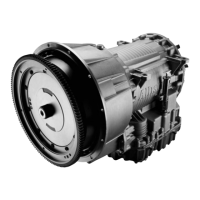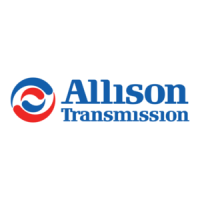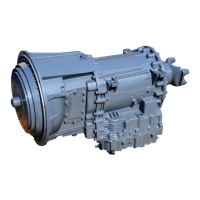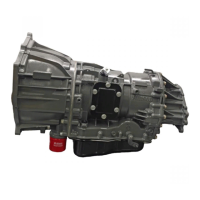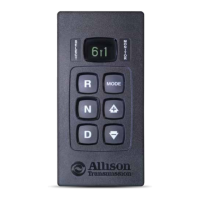CAUTION: If the transmission fluid is contaminated by water at a
volume greater than 0.2 percent, or by any trace of ethylene glycol,
disassemble the transmission and replace the following:
• Seals
• Gaskets
• Clutch Plates
• Bearings
• Torque converters that cannot be disassembled
• Components that have rusted
• Solenoids that do not meet resistance specifications
Remove all traces of ethylene glycol and varnish deposits. Failure to
follow this procedure decreases transmission reliability and durability.
CAUTION: After flushing the cooler, test the external cooler circuit for
restrictions. If circuit pressure drop is above specifications, the cooler
has trapped particles and must be replaced.
Nelco Company offers a kit that detects presence of ethylene glycol in
transmission fluid. The kit is identified as “GLY-TEK” Test Kit and can be
obtained from:
Nelco Company
1047 McKnight Road South
Saint Paul, Minnesota, 55119
(651) 738–2014
Some conditions that may indicate water and/or glycol in the fluid are:
• Rust or pitted transmission parts
• Transmission fluid spewing out of transmission breather
• Transmission fluid in radiator
• Gaskets blistered or wrinkled in uncompressed areas
• Appearance of fluid (presence of water causes a cloudy or gray, pink, or
strawberry colored fluid)
• Steam from the breather.
For additional field analysis information, refer to Allison Transmission publication
number GN2055EN, Automatic Transmission Fluid Technician’s Guide. Use this
publication to review testing methods and limits of water/glycol content.
d. Metal. Metal particles in the fluid (except for minute particles normally
trapped in the oil filter) indicate internal transmission damage. If these particles
are found in the sump, the transmission must be disassembled and closely
34
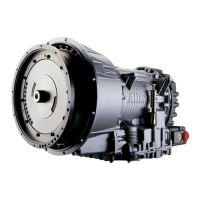
